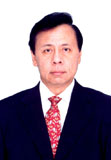|  
back
 |
Bhichit Rattakul
Asian Disaster Preparedness Center
“Evolving Trends in Geophysical, Oceanic and Atmospheric Phenomena – Implications for Disaster Risk Reduction” |
Abstract
Application of science and technology is one of the key fields of action for disaster risk reduction. Science enhances our understanding of the underlying causes of risk and provides tools to assess these risks, warn of what can happen where and when, improve response mechanisms, and undertake disaster prevention and mitigation. The past four decades have seen enormous advances in hazard monitoring and observation, data communication and hazard prediction capabilities, which have lead to a greater understanding of the nature of hazards and increased appreciation and application of that knowledge for disaster risk reduction. Increasingly accurate and locally-specific weather and climate forecast products with longer lead times are now possible, with the enhanced understanding of the atmosphere-ocean interaction and the development of computer models to capture this interaction. These products have immensely contributed to the improvement of disaster warning systems.
Though human-induced global warming over longer time scales would disturb the atmosphere-ocean interaction and alter currently predictable patterns, the knowledge generated by the scientific community and the awareness created on its potential implications have gained the recognition and appreciation of a wider section of stakeholders. Huge challenges confront the scientific community to understand the processes and patterns of atmosphere-ocean interactions and their influence on the Earth’s geophysical dimension.
Increasingly, there is a demand for multi-disciplinary approaches and greater applicability of scientific and technical research to reduce disaster risks. The AOGS provides a venue for scientists from various disciplines to cooperate towards public benefit. Translating scientific and technical research into practice, however, is a challenge as we deal with issues relating to uncertainty, communication to diverse users and application uptake, in addition to the need for a system-oriented, rather than deterministic, thinking. The tsunami of 26 December 2004 revealed that knowledge of the geological and tsunami risks of the Sumatra region, coupled with advances in tsunami prediction capabilities, did not translate into effective risk mitigation policies, such that warning systems and awareness programs were nought, leading to its devastating impacts in the Indian Ocean region. We have demonstrated that these challenges can be overcome through science-policy dialogue, establishing institutional mechanisms and developing institutional capacities in scientific information interpretation, translation and communication, and facilitating user uptake for local application.
back
|



